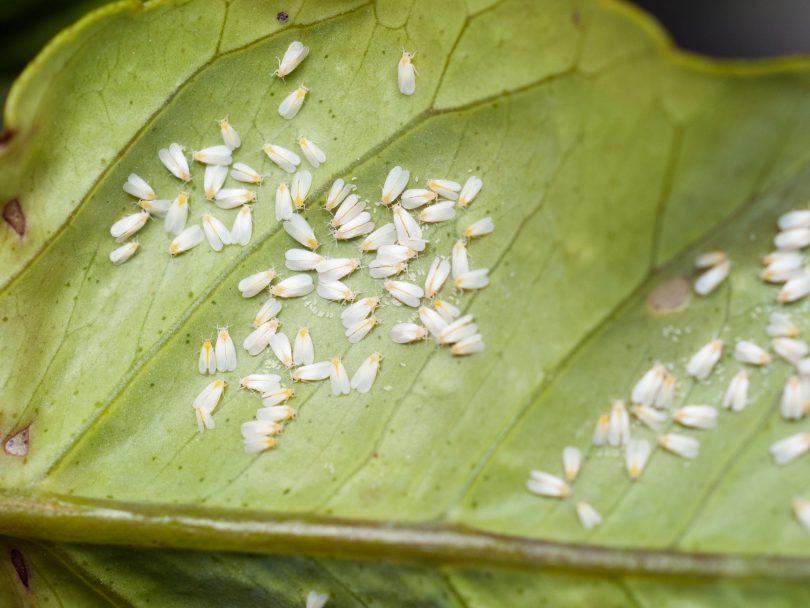By Vicki Spencer, Master Gardener
The may be found on houseplants, the most prevalent are mealybugs, spider mites, greenhouse whiteflies and gnats.
Mealybugs are typically found in warm, moist climates so you wouldn’t think they would be a problem in Colorado, but they may infest greenhouse plants that you bring into your home. One sign of mealybugs is leaves dropping prematurely. If you look closely, you will see the little, white mealybugs on the underside of the leaves and on stems.
Spider mites are a particularly destructive pest. They are fairly common in Colorado as they prefer hot, dry climates. The initial sign of spider mites is tiny yellow or brown spots, or stippling, on leaves, which cause the leaves to shrivel and drop. The mites hide on the underside of leaves where they spin fine webs. You may notice the webs long before you see the mites. My first time encounter with spider mites was horrifying. They quickly covered the entire plant and I had to throw it in the trash. Since then, I inspect my plants regularly for signs of insects.
The greenhouse whitefly is a pest you might inadvertently bring into your house during the holidays as they are commonly found on poinsettias. You can avoid whiteflies, as well as other pests, by examining plants before you buy them. Like mealybugs and spider mites, whiteflies cause the leaves to drop prematurely.
These three pests may be treated by washing the leaves with a solution of warm water and non-detergent dish soap. After washing, rinse or wipe the leaves with clean water. Another way to kill these pests is with rubbing alcohol. Dip a cotton swab in the alcohol and dab it directly onto the bugs. After applying alcohol, place the plants out of the sun to prevent the leaves from burning. Other effective remedies are neem oil or commercial insecticidal soaps. Be sure to only use products labeled for indoor use. Typically, one treatment is not enough — you will need to inspect your plants weekly and repeat the treatment until you no longer see signs of the insects.
When the holidays are over, I like to make room for gifts by deep cleaning my home —washing my plants is part of that ritual. I inspect each one for weakness and signs of insects. I may need to repot some, but I clean them all by rinsing plants in the sink or washing their leaves, one at a time, with warm, soapy water. Cleaning all plants at the same time prevents insects from moving from an infected plant to an uninfected one.
The cleaning ritual always gives me joy as it allows me to focus on each plant’s unique beauty. And, yes, I believe they respond lovingly to the individual attention. By repeating this process seasonally, you too can have healthy, happy houseplants.
Gardener Vicki Spencer has an eclectic background in conservation, water, natural resources and more.

